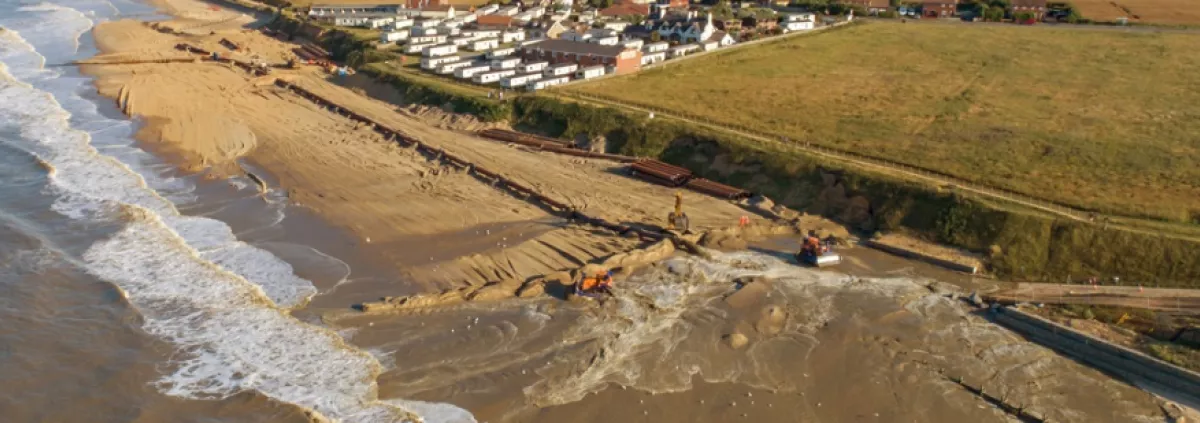In December 2013, a North Sea storm halved the cliff-top buffer at Bacton Beach, North Norfolk where Shell's terminal delivers one third of the UK’s gas supply and caused flooding for many households in the neighbouring villages.
In 2019, using the innovative sand engine approach, Royal HaskoningDHV worked with Shell and North Norfolk District Council to build a nature-based solution that will protect the terminal and surrounding areas for another 15 years. Royal HaskoningDHV developed a custom-built digital twin of the beach to optimise long-term management of the beach, helping make the terminal and the villages resilient to long-term coastal change.
A digital twin (DT) is a virtual mirror of the physical world, it represents the beach at Bacton in its past, present and future state. As the DT is an accurate copy of reality, it can be used to test the behaviour of assets in future scenarios. At Bacton, the DT supports North Norfolk District Council's future investment decisions by comparing future beach erosion to a trigger for intervention thus determining where and when investment will be needed.
The DT uses results of coastal models, continuously validated by regular topographic and bathymetric surveys, to predict the future coastline developments. In the online user interface, beach managers can immediately see where and when they would need to intervene, and can therefore prepare ahead of time, increasing the climate resilience of the coast.
As an innovation in technology and digital solutions, it is hoped the digital twin will prompt coastal managers to start thinking in terms of adaptation in a proactive manner.
